I have decided to provide all my content and knitting patterns for free. This means that my income comes from advertisements.
This webiste contains affiliate links meaning that if you buy something after clicking them I may earn a small commission. This does not result in any additional costs to you and the money I get from the yarn sales enables me to use my time to create free content for you. If you decide to purchase I’m really grateful for your support!
This is my favorite recipe for simple knitted summer socks that I love to wear with sneakers. I have written the pattern for fingering weight yarn but it can easily be adapted to different yarn weights.
The pattern is available for free below.
Select size with approximately 0.8″ [2cm] of negative ease. Measure your foot circumference around the ball of the foot.
56 (60, 64, 68, 72) sts. Length of foot can be adjusted.
Foot circumference (unstretched)
7 (7.5, 8, 8.5, 9)″ [17.5 (19, 20, 21, 22.5) cm] around
32 sts and 40 rows per 4″ (10cm) in stockinette after blocking.
Measuring tape, scissors, piece of scrap yarn, tapestry needle
US 0 30″ [2mm 80cm] or longer circular needles.
Adjust needle size to obtain the correct gauge.
If you need help with needle selection please read this guide.
Sample uses fingering cotton sock yarn Regia Cotton Tutti Frutti (420m (459 yds) / 100 g). The yarn has plenty of delicious self-striping color options. You can purchase the yarn from Lovecrafts and Etsy.
Other suitable yarns
Here you can find a guide for selecting a good quality yarn for your sock knitting project.
Reagia Cotton Tutti Frutti
Or a similar amount of fingering weight sock yarn (420m (459 yds) / 100 g)
Knitting abbreviations used in this pattern you can find here.
This pair of summer socks is knitted toe-up in one piece. The pattern is written for the magic loop method (for 2 needles) but can easily be adjusted for double-pointed needles (4 or 5 needles) as well.
This pattern is suitable for self-striping yarn because the heel construction does not break the striping pattern.
CO 20 sts (10 sts / needle). Sample uses the Turkish cast-on method.
Divide the stitches evenly on two needles. Knit one round.
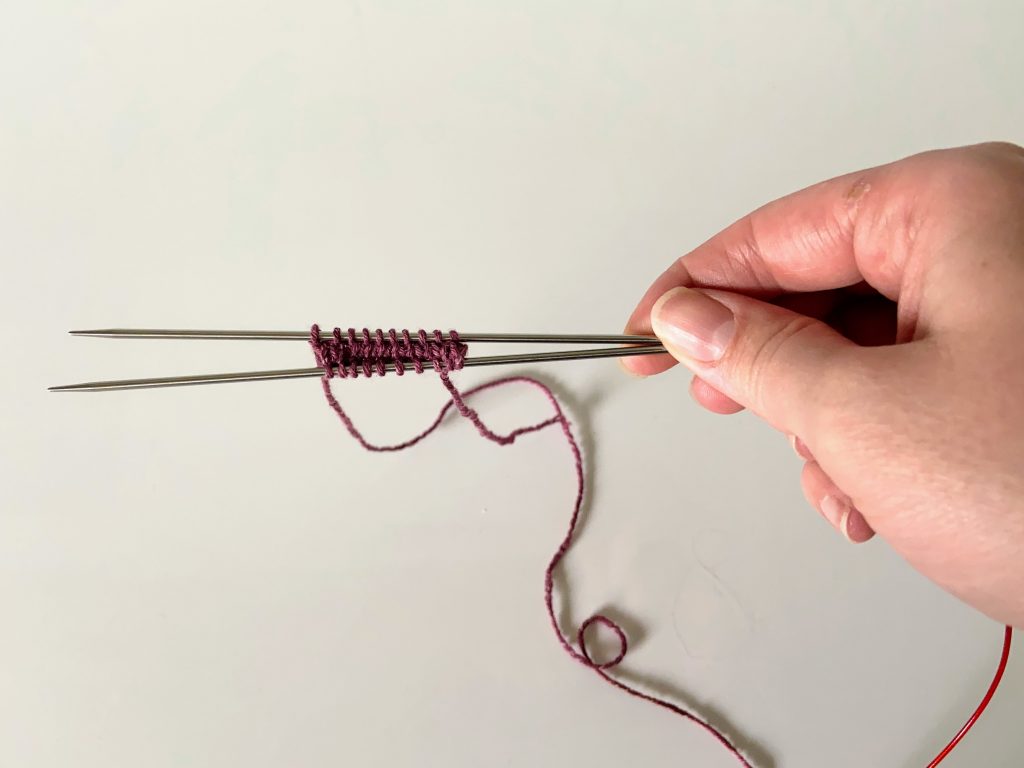
A total of 4 sts increased.
Increase every other round until you have a total of 56 (60, 64, 68, 72) sts (or until you reach the desired circumference).
Measure the length of your toe and write it down. This measurement is used for calculating the heel placement.
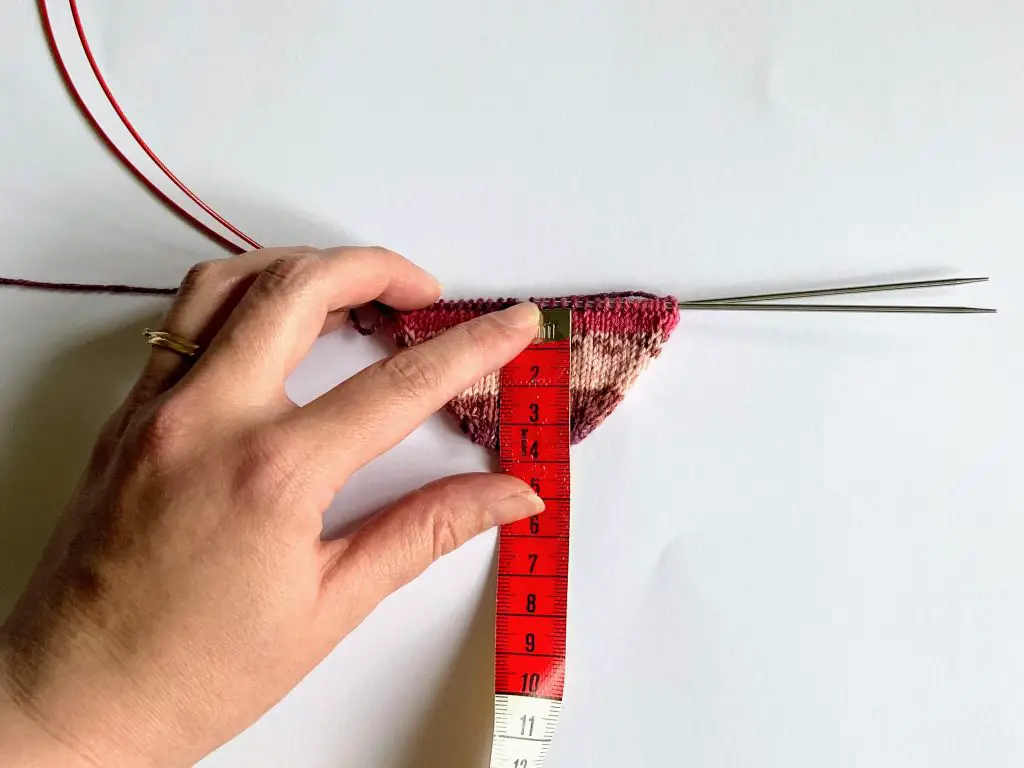
Knit in the round until your work measures
Desired lenght of socks foot - the length of your toe after increases
I recommend making the sock 0.5″ (1 cm) shorter than the foot you are knitting it for.
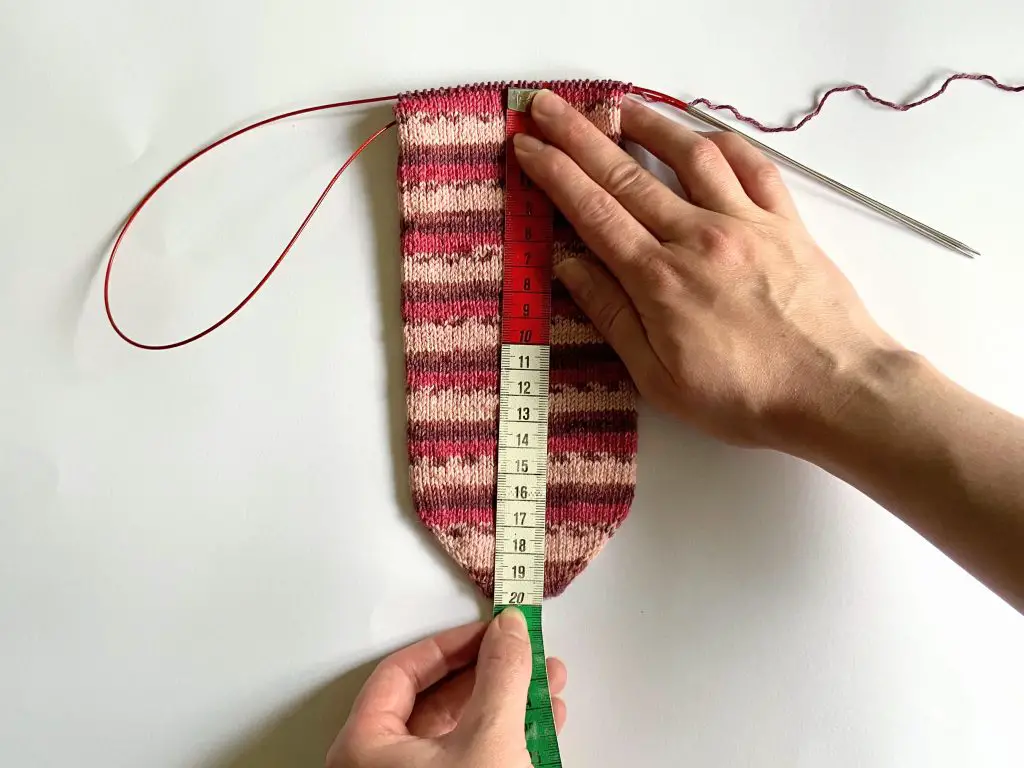
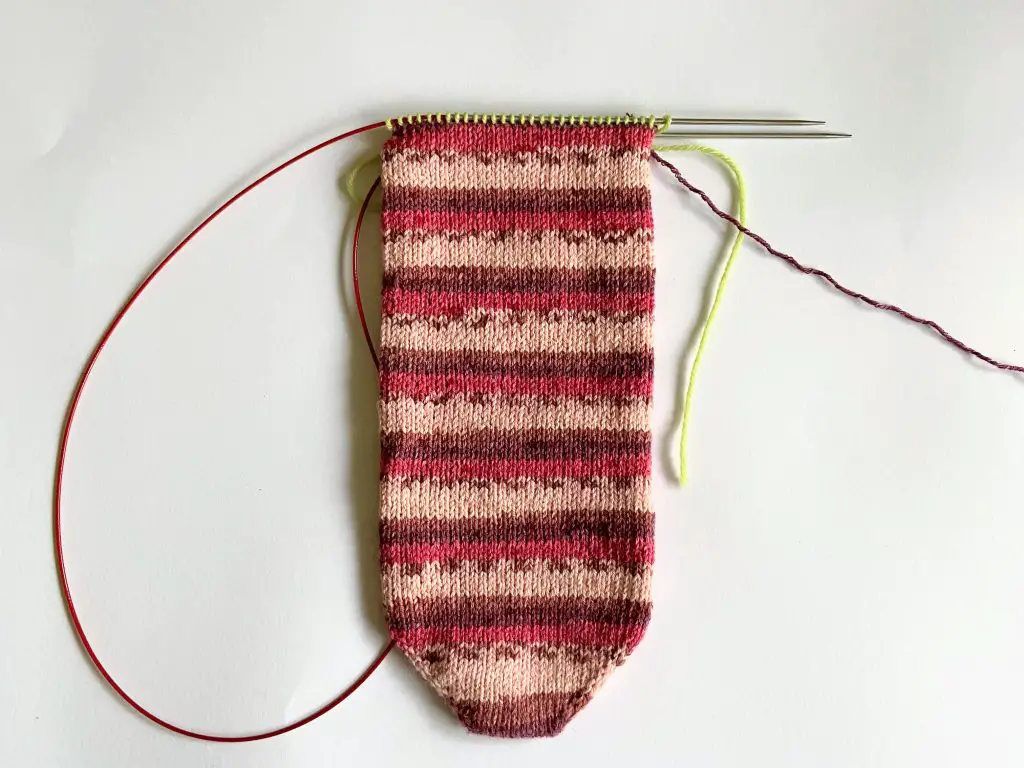
Decrease every other round until you have a total of 20 sts (10 sts / needle) remaining.
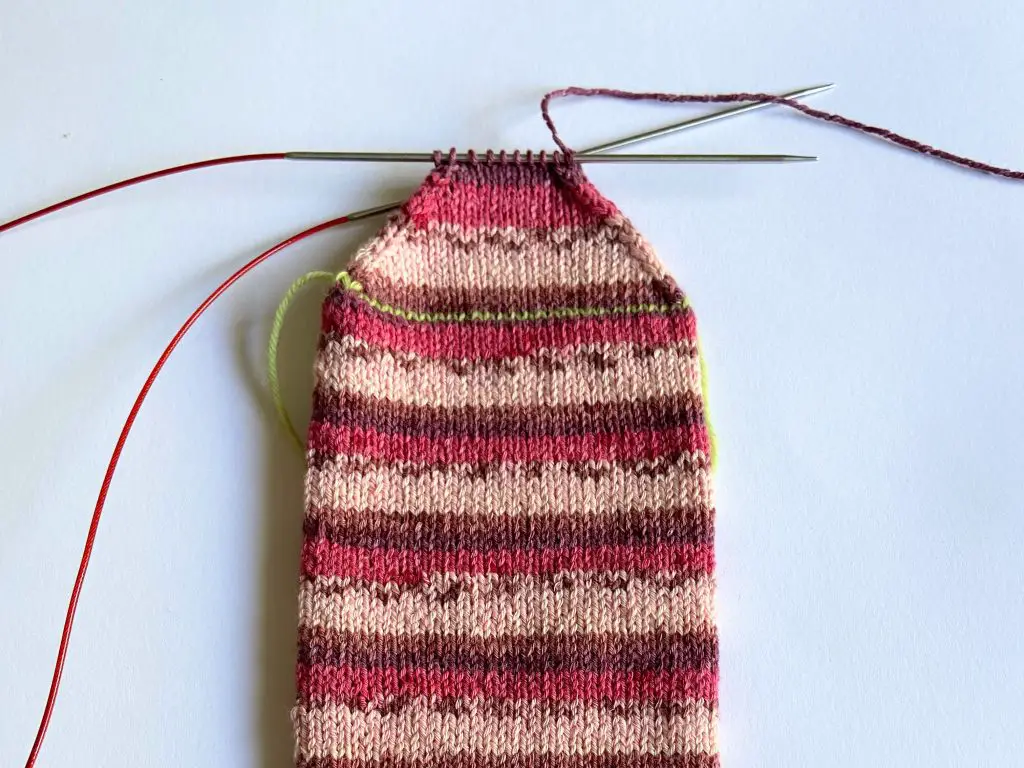
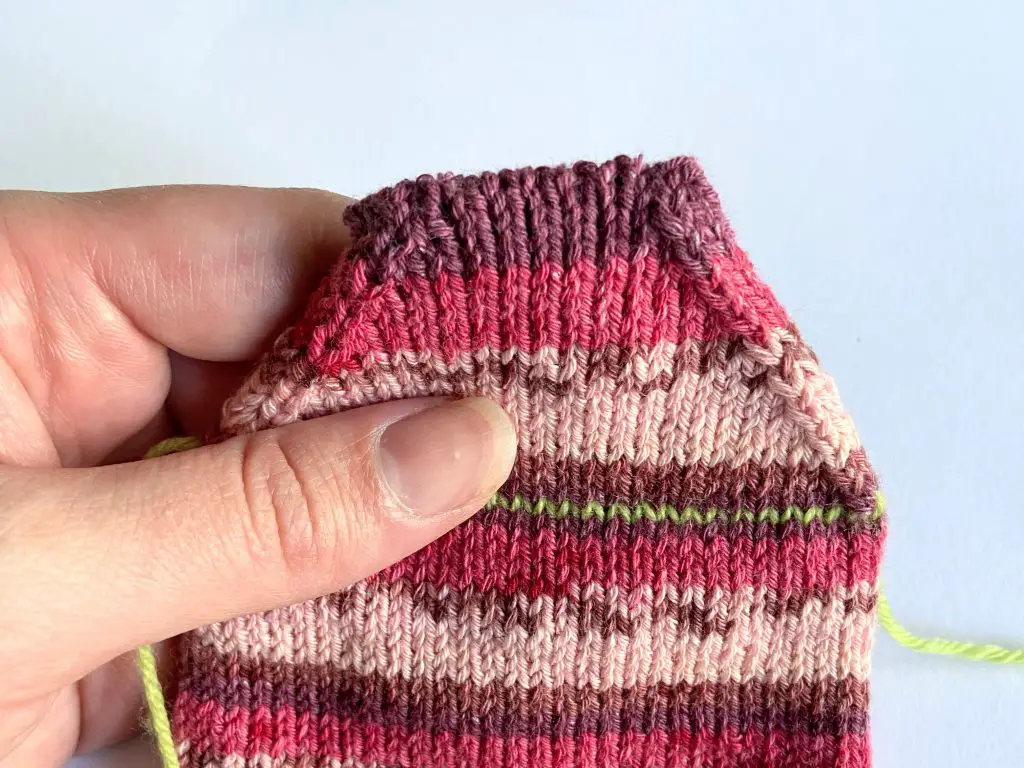
Unravel the scrap yarn and place the stitches evenly on two needles. You should have now a total of 56 (60, 64, 68, 72) sts (or a similar amount as you had for the body of your slipper).
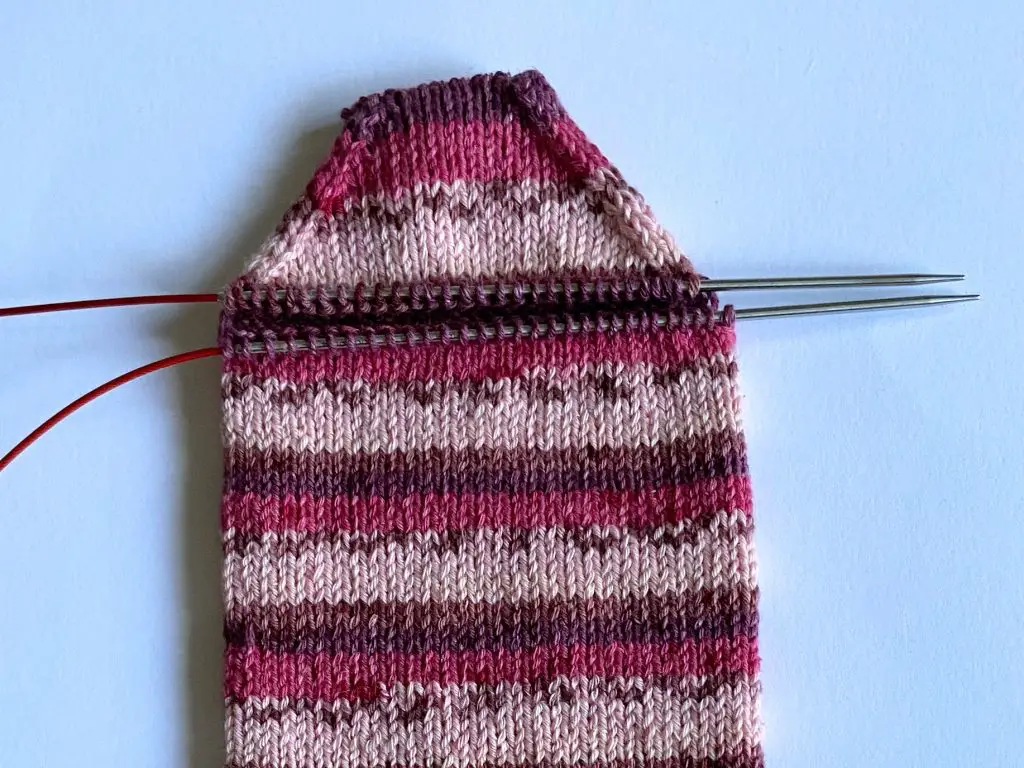
In order to improve the fit of the slippers, we are going to make the back of the heel a little bit higher by knitting a few extra rows.
With the back of the heel and RS facing you attach the yarn to the work.
Repeat rows 1 & 2 twice more. A total of 62 (66, 70, 74, 78) sts.
Turn your work and k one round.
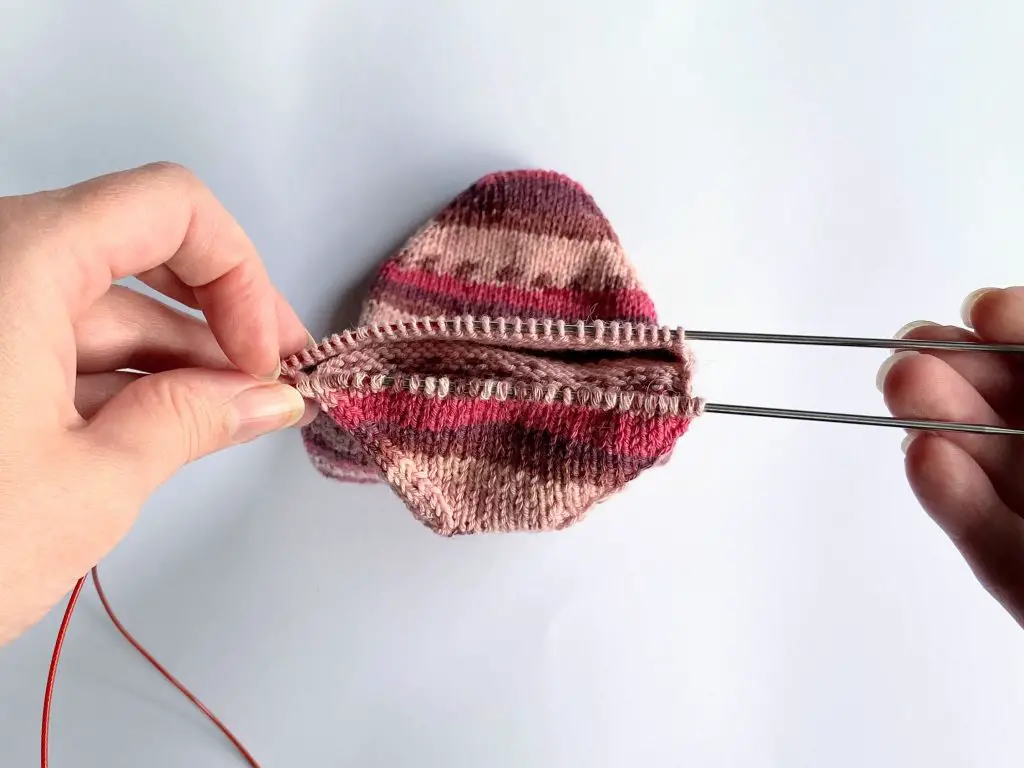
Bind-off using the i-cord bind-off method as follows:
CO 3 sts (sample uses knitted cast-on method).
*(k2, k2tog tbl, slip the sts from the right needle back to the left needle), repeat from * to BOR.
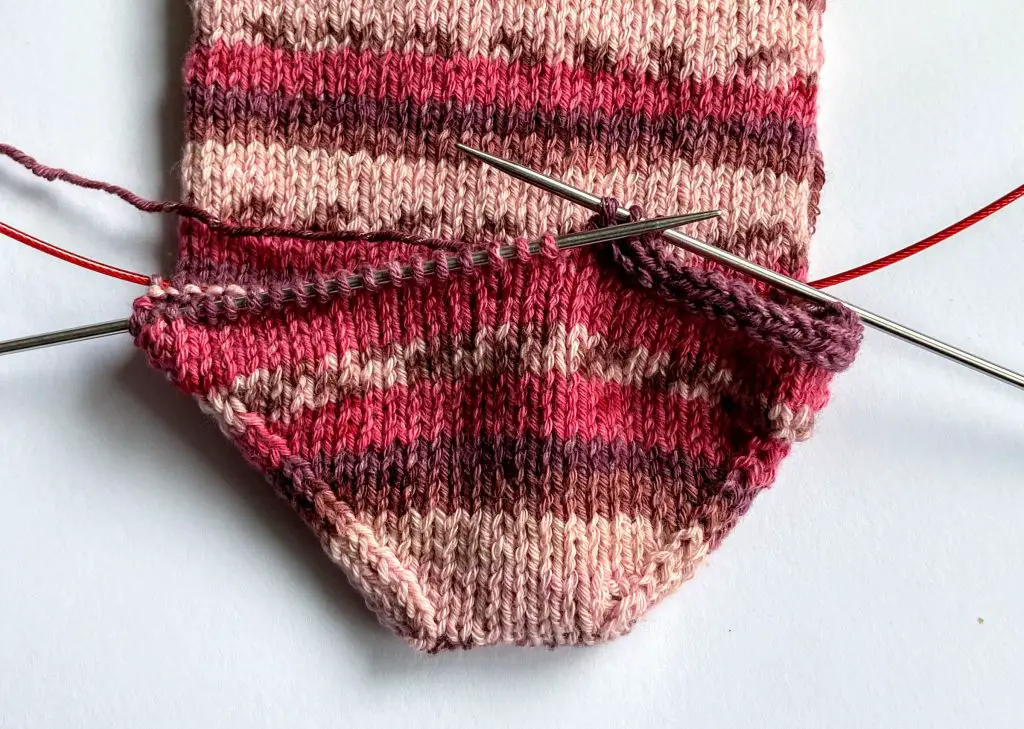
I would be happy to see your version! You can share it with me on Instagram by tagging me @knitgrammer or leaving a review with an image below.

I’m Ida a 30 something engineer living in Lapland, Finland. I love knitting and programming, hence the nickname Knitgrammer. In my blog you’ll find tools (knitting calculators and interactive patterns) which will save you some trouble and do the knitting math for you.
My design philosophy is to make simple, useful, and beautiful things. If I make something I (or my kids or husband) don’t enjoy wearing I won’t publish the pattern.
I’ll send you my top 5 tips of how to make a durable pair of socks.
Copyright © 2022 Knitgrammer
I’ll send you my top 5 tips of how to make a durable pair of socks.
1 review for Basic ankle socks